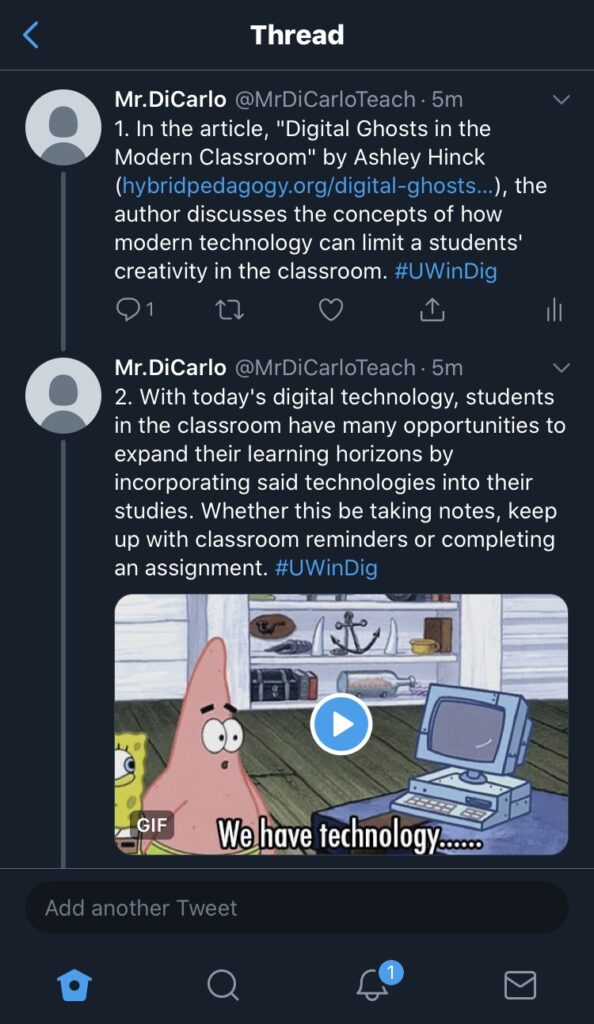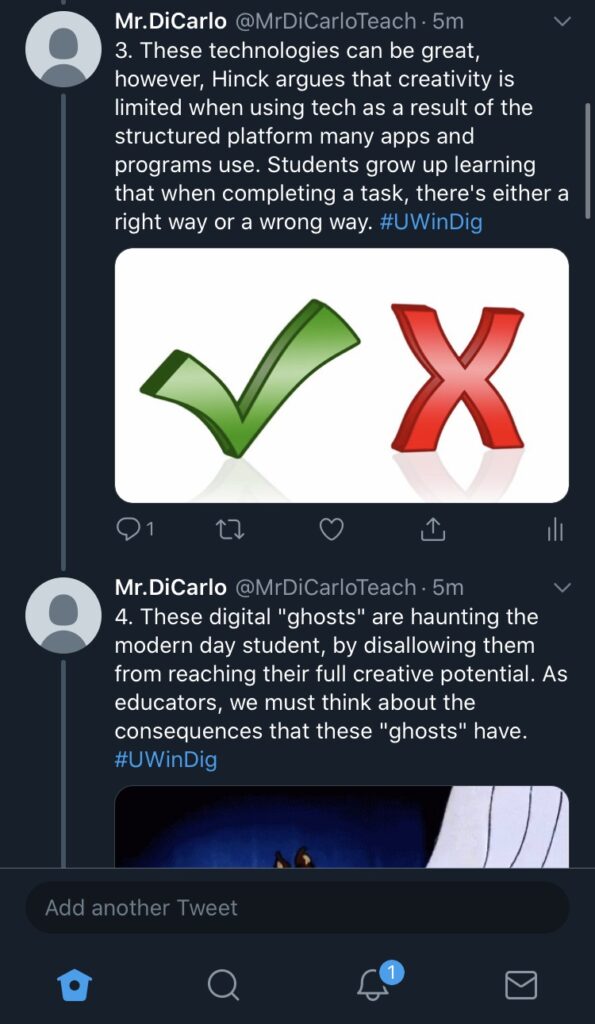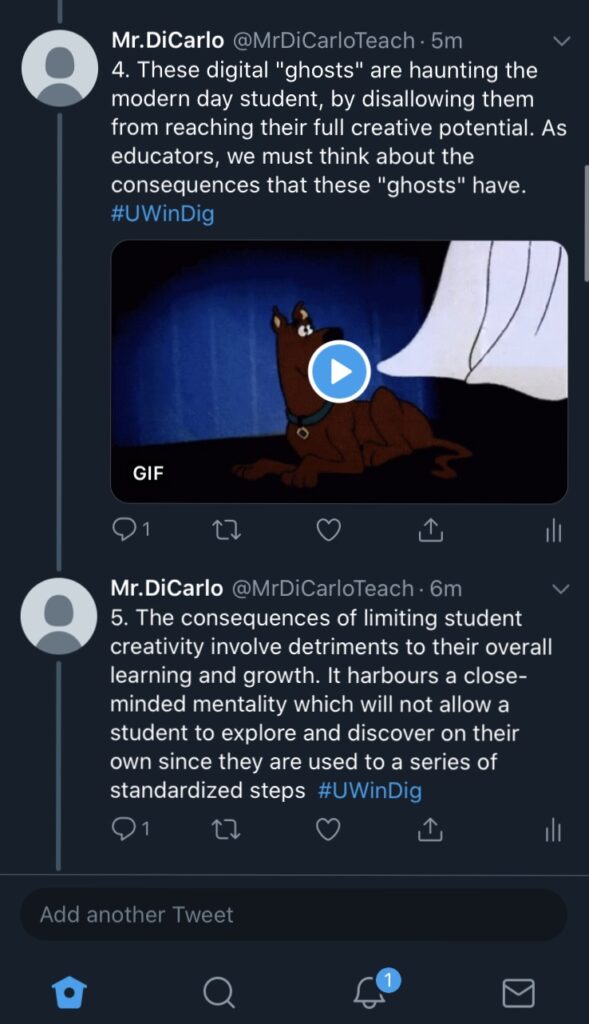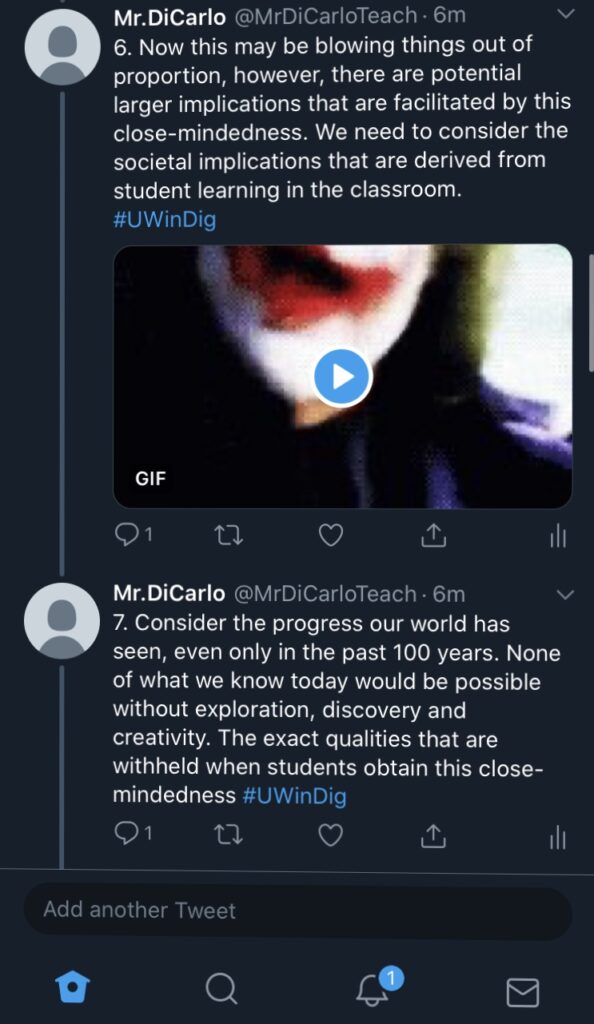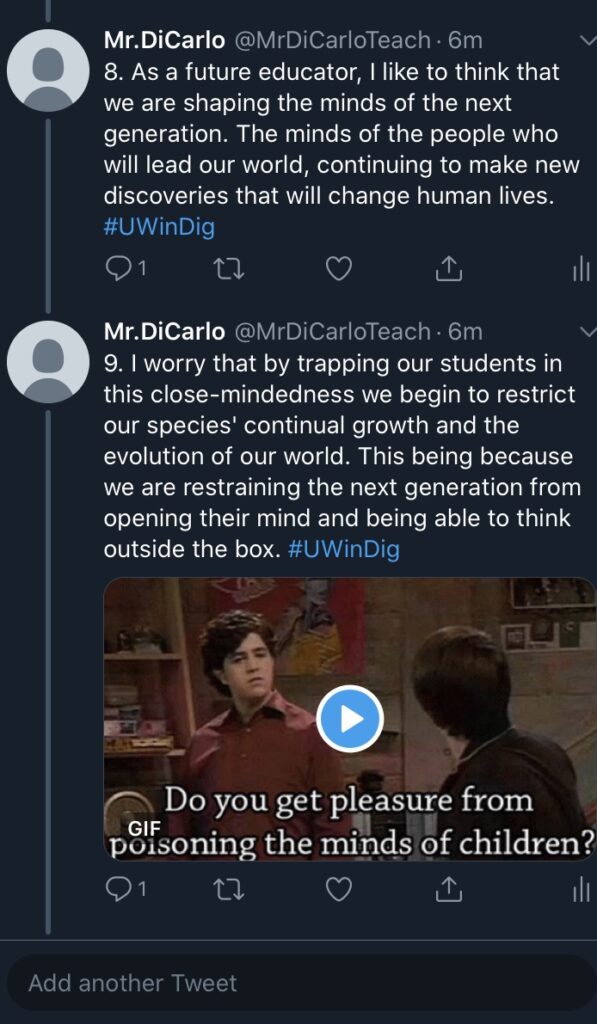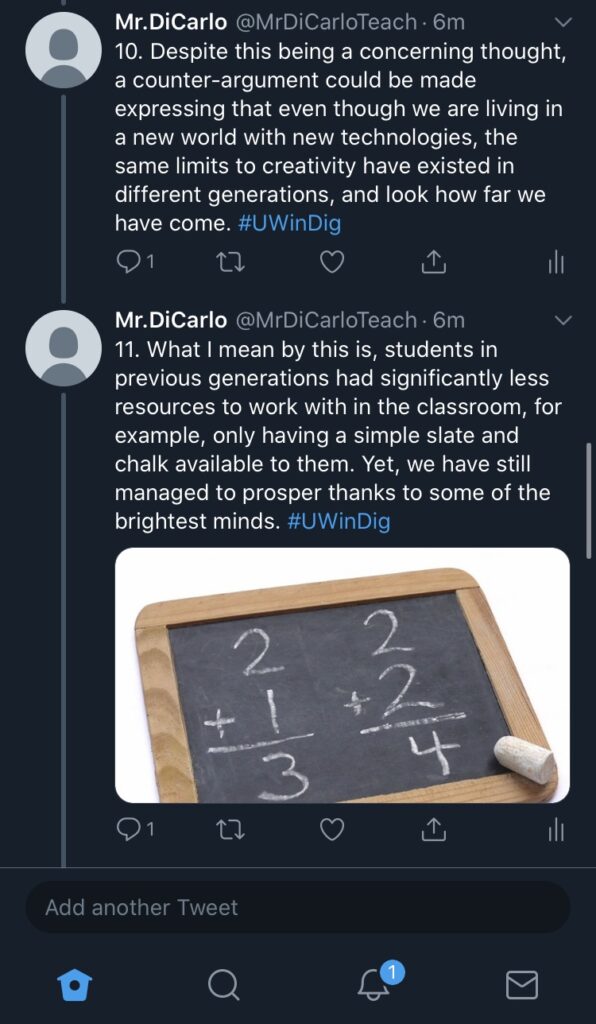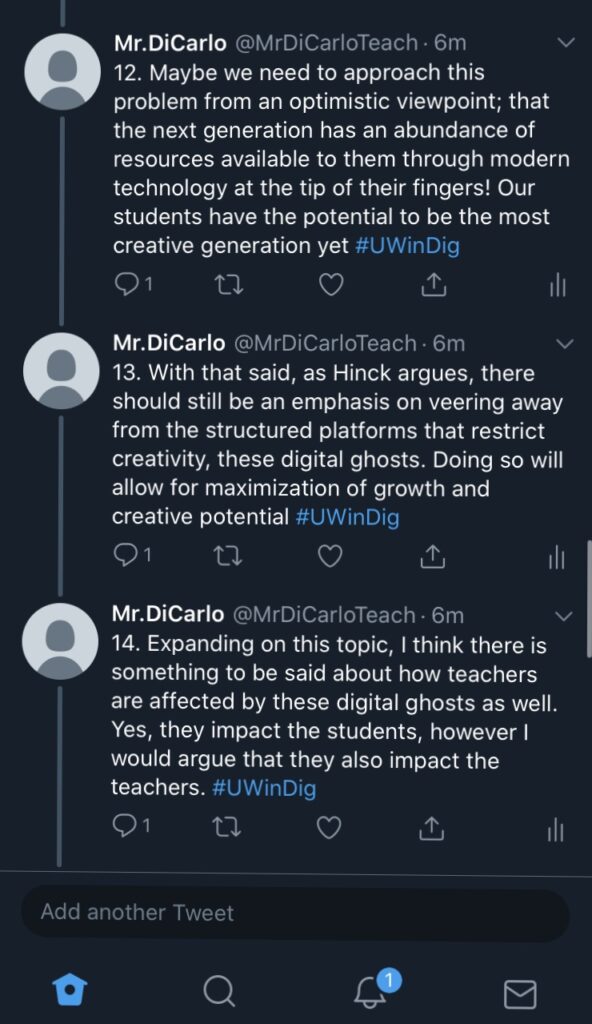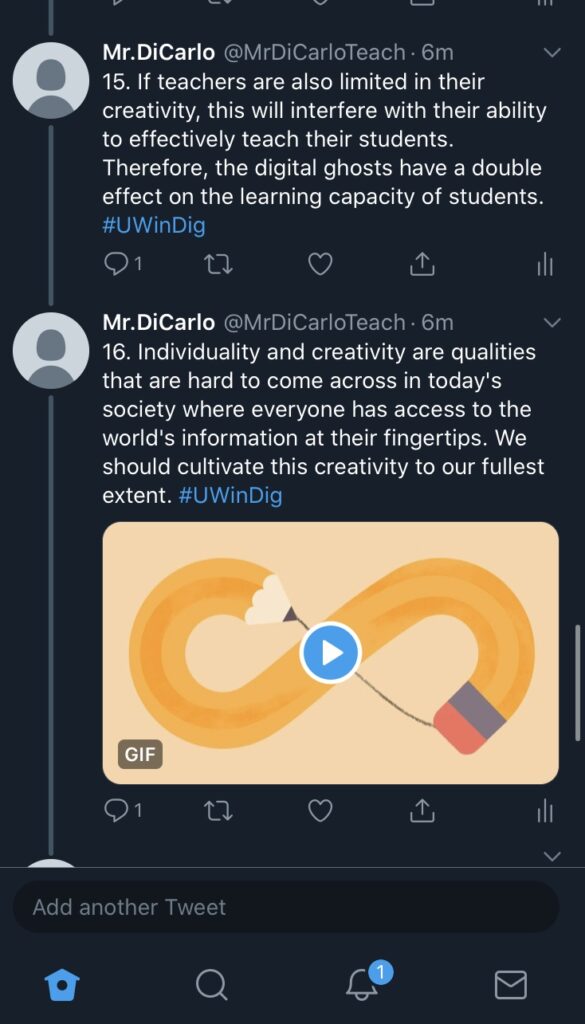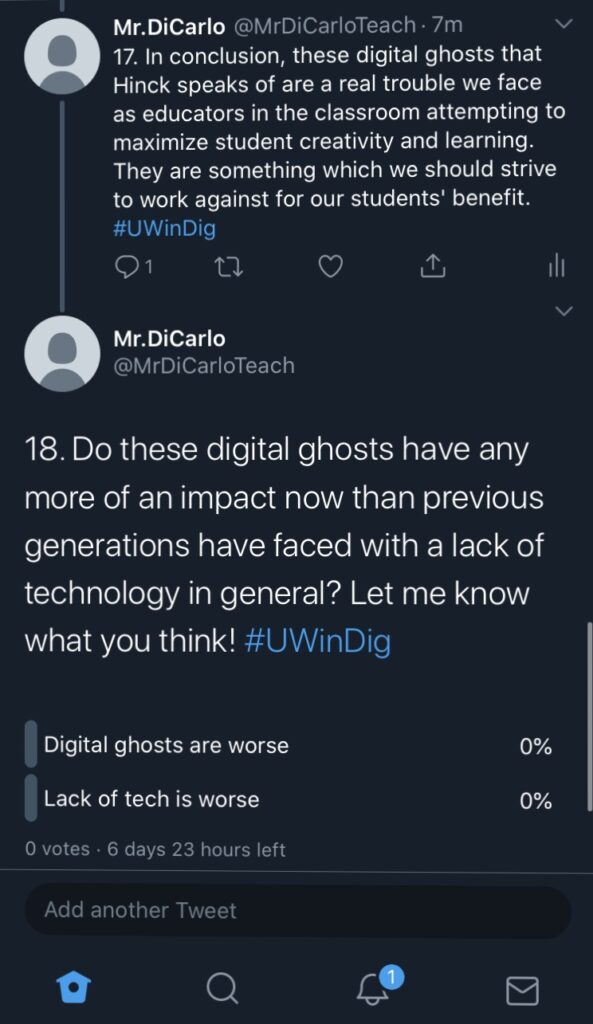Ontario Extend is a government initiative focused on exploring skills, knowledge, and attributes of good pedagogical practices whilst incorporating new and innovative technological approaches that can transform and extend the learning experience of students. One of the modules within the project is the Collaborator Module, which outlines the importance and foundations of being a collaborative educator. The module focuses on how to become an effective educational collaborator, essentially providing a step-by-step approach. Firstly, discussing the reasoning behind collaboration and the importance of collaboration in general. Next, discussing Personal Learning Networks (PLN) and how the use of your own PLN can contribute to educational collaboration. Lastly, the module discusses how a person is able to develop their own PLN and explore its depths by mapping it out.
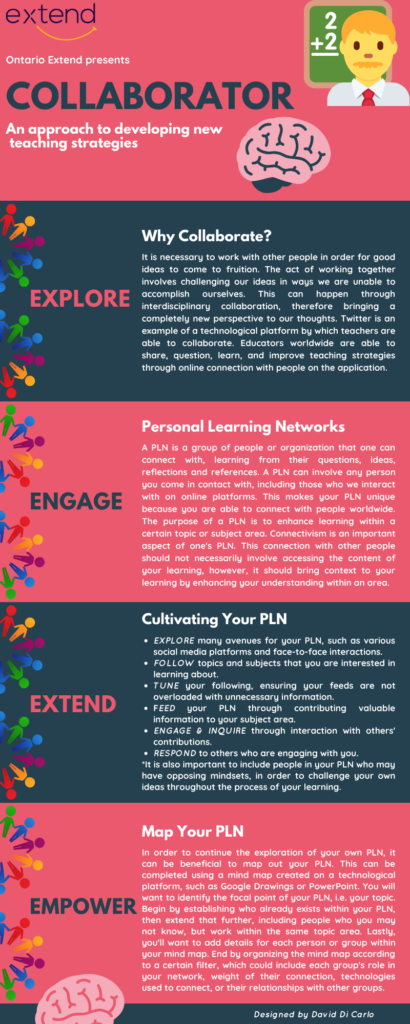
Personally, I believe that collaboration is an integral aspect of developing a deep understanding of any topic because it allows the integration of new perspectives that may challenge or add to your pre-existing beliefs and ideas. The issue lies that many people are unaware of how to collaborate, or how to gain a group of people to collaborate with. I think that the Collaborator Module has provided an excellent insight into the necessity of collaboration in professional learning and outlining just how one is able to accomplish such collaboration. It is important to realize that in modern society, technology is a fundamental aspect of our lives, yet I find that some people are stuck in the past when it comes to professional learning. There needs to be some movement in the sense of accepting the validity of online collaboration for professional uses, as opposed to only thinking face-to-face interactions are acceptable. The module provides insight into how one can properly utilize technological platforms, such as twitter, in order to expand one’s PLN, enabling maximization of professional growth. I think that if crafted appropriately, a PLN can become a form of many-to-many communication, where people world-wide are able to extract and contribute information in order to enhance learning within the realm of their subject area.

In general, Ontario Extend’s Collaborator module is attempting to prosper the abilities of teachers through an extension of their base of knowledge and resources surrounding teaching. I believe that the act of collaboration is a beneficial way for learning and growth to occur for an individual. Specific to teaching, collaboration allows for the best possible outcomes for both the students and the teachers themselves. Through gaining experience from other educators, teachers are able to extract aspects of lessons, activities or teaching styles that they think would work for them and implement these into their own classroom. Additionally, these teachers are able to recognize certain aspects that they wish to exclude from their teaching practices. The art of being a teacher is all about trial and error, attempting to identify what is effective for yourself and what will work for your specific group of students in your classroom environment. Educational collaboration simply provides a network in order to cultivate your pedagogical mindset, gaining experience and insight through discussion with others who may have already had success with a certain strategy. A good teacher is someone who teaches, but a great teacher, is someone who learns and teaches… what better way to learn than through collaboration with others who already have experience?


